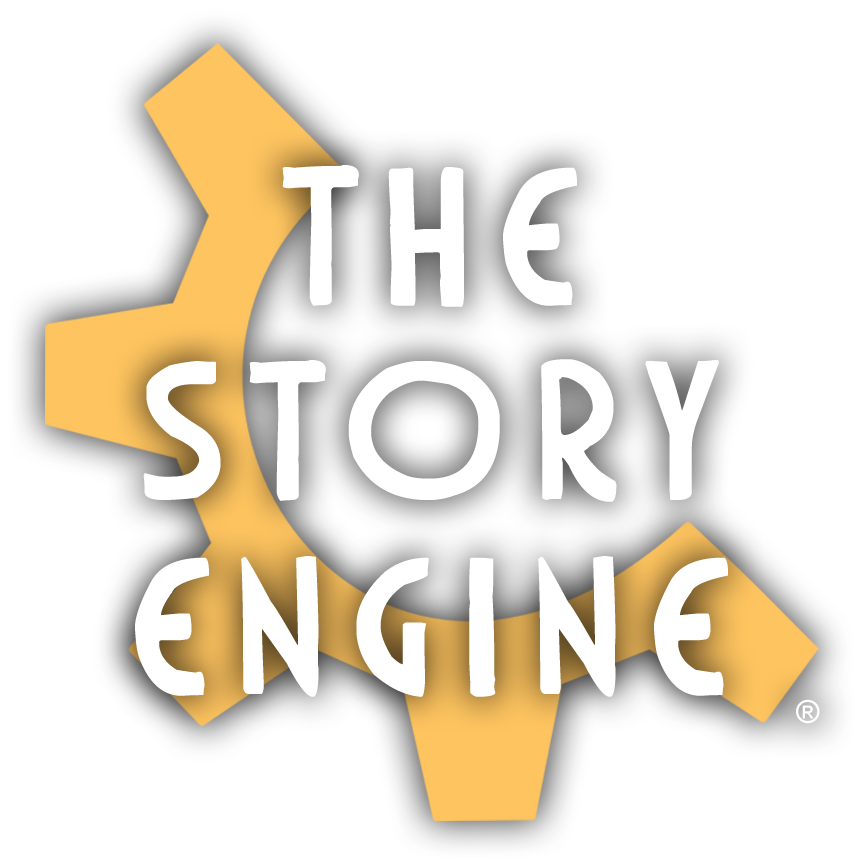The Story Engine Deck is a story-prompting card system that can help you create billions of ideas for new stories, characters, settings, and more.
Creating your own cards for the deck using the online card creator app or blank card print sheets is a rewarding endeavour—especially if you keep certain design notes in mind as you go.
Below is my advice, as the designer of The Story Engine Deck, on how to design cards that will work well with the structure of the deck and offer rewarding, versatile prompts for a variety of users.
Agent Cards

|
Number of cues: 4 Cue format: A(N) + [NOUN THAT A CHARACTER CAN BE] Example cues: A HERO / A REBEL / A MARTYR / A MENTOR |
Agent Cards represent the characters in your story. They work best when they offer both broad and narrow suggestions, and when those suggestions are thematically linked.
Brainstorm character ideas that are linked by a theme, setting, genre, image, archetype, or role. These character ideas might be based on personality types (e.g. "A REBEL"), societal roles (e.g. "A VISIONARY"), relationships (e.g. "A PERSONAL HERO"), occupations (e.g. "A SCIENTIST), talents (e.g. "AN ARTIST"). Notice all of these words could describe different aspects of the same character: perhaps a mad scientist or a temperamental inventor.
When you have a list of related words, select four that you feel express a variety of ways of approaching that common link.
It's especially helpful if at least one cue can is open-ended and fits into any genre or situation (for example, "A HERO"), and at least one cue is specific enough for a literal-minded person to immediately imagine an example of (for example, "MARTYR").
Some words encourage both broad and narrow interpretations and are especially useful for Agent Cards.
Engine Cards
 |
Number of cues: 2 Cue format: WANTS TO + [MOTIVATION THAT REQUIRES A PERSON, PLACE, OR THING TO COMPLETE ITS SENTENCE STRUCTURE] Example cues: WANTS TO EXPOSE THE SECRET OF / WANTS TO BURY THE SECRET OF |
Engine Cards represent motivations that create a link between one card (usually an Agent) and another card (usually an Agent or an Anchor).
It's essential that Engine cues leave room for a noun to complete the sentence structure, and that the Engine Card as a whole is flexible enough to connect to either a person (Agent) or a place or thing (Anchor). For example, "WANTS TO FIND" could be completed by both a person (e.g. "A DOCTOR") or an object (e.g. "AN HEIRLOOM").
Sometimes an Engine cue can be made more versatile by offering multiple prepositions at the end (e.g. "WANTS TO FIND REDEMPTION IN/FOR" ).In this case, "IN" would work better for an Anchor, while "FOR" would work better for an Agent.
It also helps if at least one cue expresses a small-scale motivation that beginner writers will find approachable. For example, rather than having one Engine say "WANTS TO SAVE THE WORLD" and "WANTS TO DESTROY THE WORLD WITH" (two large-scale motivations), split those cues up onto two cards. Instead, one Engine could read, "WANTS TO SAVE THE WORLD WITH" and "WANTS TO SAVE SOMEONE'S LIFE WITH," offering both epic and small-scale plot options.
Anchor Cards

|
Number of cues: 4 Cue format: A(N) + [OBJECT, LOCATION, EVENT, OR OTHER STATIC STORY ELEMENT] Example cues: A PARADISE / A SEED / A FOREST / A PLANT |
Anchor Cards represent objects, locations, events, and other static elements of the story.
An Anchor can be used for a variety of roles in the story, so it helps to make at least one an object that might be used as a prop (e.g. "A PICTURE" or "A KEY"), and one cue that might be used as a setting (e.g. "A HOSPITAL" or "A MOUNTAIN").
The rest of the cues could be other static elements of a story, for example, an event (e.g. "A CONCERT" or "A FIGHT"), an experience (e.g. "A DREAM" or "A MEMORY"), a piece of information (e.g. "AN ADDRESS" or "A PASSWORD"), or a life event (e.g. "A PROMOTION," or "A SURGERY").
It helps if all four cues can be linked by a common theme, scene, or image.
Conflict Cards

|
Number of cues: 2 Cue format: BUT + [OBSTACLE, PRICE, OR CONSEQUENCE] Example cues: BUT THEY MUST RECONCILE WITH AN OLD ENEMY / BUT THEY WILL LOSE THEIR CLOSEST FRIEND |
Conflict Cards represent the trouble a character faces in fulfilling their desire.
Conflict cues usually take the form of an obstacle (e.g. "BUT THEY WILL HAVE TO CONVINCE A STRANGER TO HELP THEM"), a price (e.g. "BUT THEY WILL HAVE TO GIVE UP ON A DREAM"), or a consequence (e.g. "BUT AN INNOCENT PERSON WILL SUFFER").
As with Engines, it helps if the two cues on a Conflict Card are thematically linked, and at least one can be approached in a small-scale story.
The best Conflict Cards tend to read like a literary "Would you rather?" dilemma. Some may even be presented as a choice that a character must make in certain complex prompts, so it helps if the two cues offer an interesting contrast.
A good conflict may experiment with any of the values that are important to a character: friends, family, social status, independence, reputation, money, fame, power, experience, community, religion, morality, safety, politics, physical and mental health, and more.
Aspect Cards

|
Number of cues: 4 Cue format: [ADJECTIVE] Example cues: POSSESSED / DECREPIT / KIND / BEAUTIFUL |
Aspect Cards offer adjectives that add an extra layer of detail or description to an existing card (usually an Agent or Anchor).
Because Aspects may need be used in a variety of circumstances, it helps if every card has at least one cue that could describe a person (e.g "GRIEVING"), one cue that could describe an object (e.g. "ORNATE"), and one cue that could describe a setting (e.g. "ABANDONED"). It helps if at least one cue is multi-purpose and could describe all three (e.g. "DANGEROUS").
While the other four card types benefit from thematically linked cues, Aspect Cards work best when the words have little in common and offer a wide tonal range. I like to have at least one cue that is generally seen as a positive trait, and one that is seen as a negative trait.
Testing Your Cards
Test your cards to make sure they are balanced, interesting, and versatile.
Build a small deck that is about half your custom cards, and half existing cards from the official Story Engine deck. Shuffle them, and try layout out some quick prompts, making sure to try different types of cards in different locations. Try building at least one complex prompt.
If you find yourself with a combination where none of the cues present can be combined into a coherent prompt, review the notes above to see if any of your cards are missing an essential cue.
Sharing Your Cards
I love seeing what people invent using The Story Engine deck. If you come up with interesting cards or prompts, please feel free to share them on The Story Engine's Facebook page, or tag us on Twitter or Instagram!

